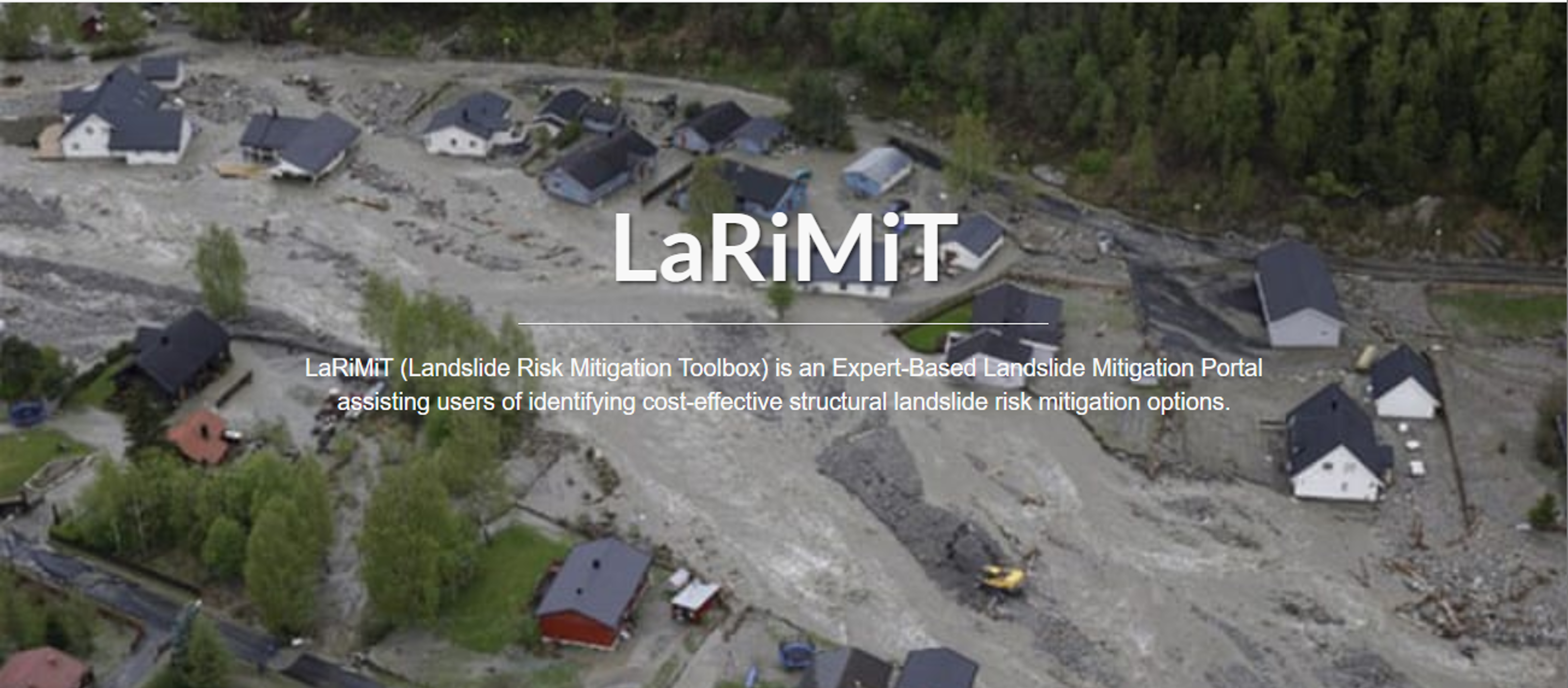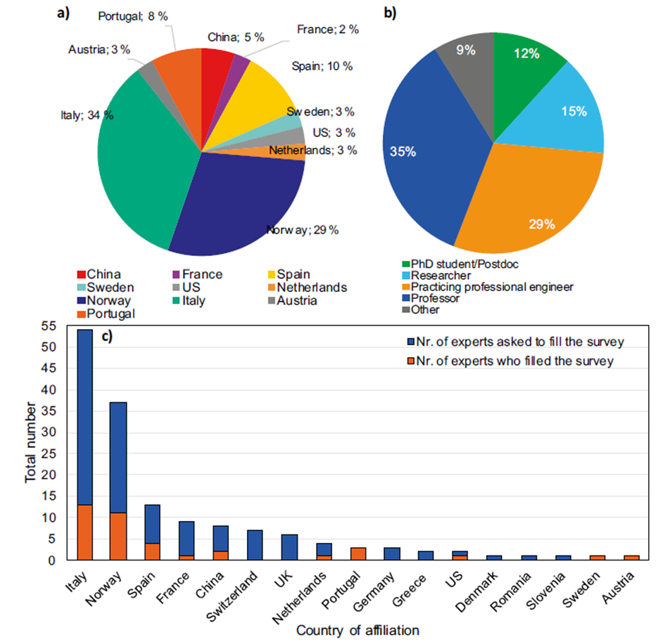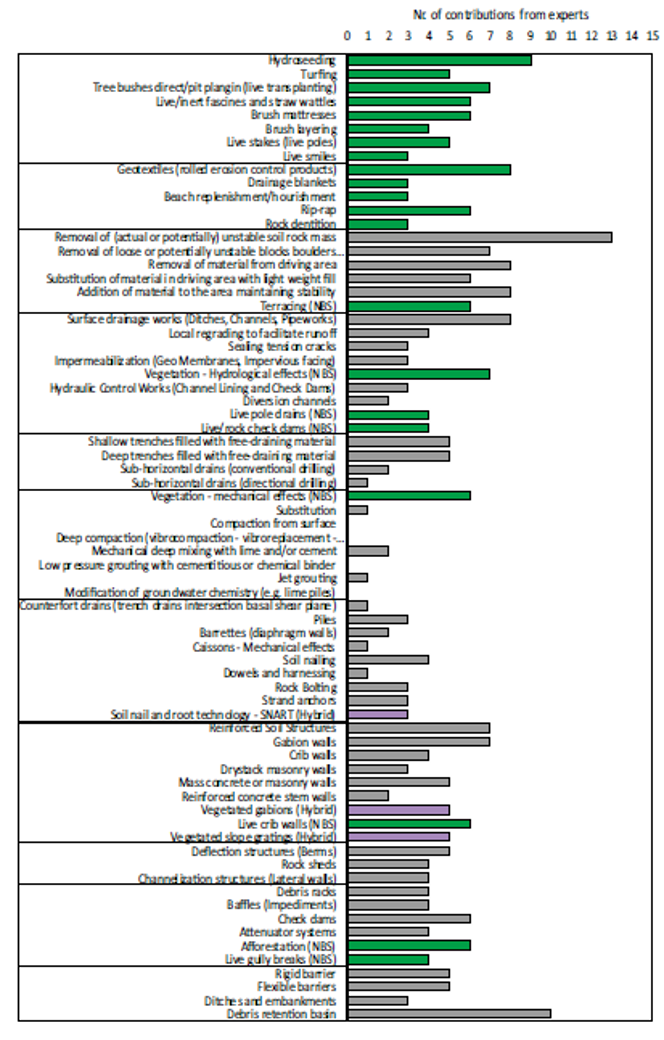Recent innovations in LaRiMiT – Landslide Risk mitigation toolbox – Extension of the database including also Nature-based solutions

The article “Recent innovations in the LaRiMiT risk mitigation tool: implementing a novel methodology for expert scoring and extending the database to include nature-based solutions“, has been published on the journal Landslides and presents innovations implemented in the LaRiMiT (Landslide Risk Mitigation Toolbox) webtool. These include an innovative methodology for utilising experts’ scoring of landslide risk mitigation measures directly within the decision support tool, and updating of the tool’s database over structural measures to include many nature based solutions (NBS) for landslide risk mitigation.
The LaRiMiT toolbox
LaRiMiT is a collaborative, web-based landslide risk mitigation portal providing an expert-assisted tool for the case- and site-specific ranking and best-practice selection of landslide risk mitigation measures among a growing database of mitigation measure alternatives (currently 80). It is an ongoing research project that was conceived by the SGI – Italian Geotechnical Institute and then further developed by NGI – Norwegian Geotechnical Institute.
The web portal (https://www.larimit.com/ ) was developed to help practitioners during early phase management of rainfall induced landslides.
Database including Nature-Based Solutions
Until 2019, the web portal contained a list of conventional structural landslide mitigation measures, with examples of applications, descriptions and design methods for each of them.
In late 2019, further development of the tool aimed at expanding the database, including both Soil-water-bioengineering techniques that fall under the umbrella concept of Nature-based Solutions (NBS), and hybrid solutions (a combination of NBS and conventional grey solutions).
Iterative methodology for experts’ scoring – first application
To make the decision-tool more robust and reliable, a collaborative effort involving a pool of international experts in landslide risk management from practice and academia was launched, with the aim of updating and integrating the scores established for the initial configuration of the LaRiMiT platform.
This process relied on the compilation of a survey by a group of selected international landslide experts and developing a methodology for collecting expert opinions and incorporating them into the LaRiMiT web portal.

Experts responding to the survet: a) country of affiliation of responding experts; b) professional qualification; c) number of responding vs. invited experts by country of affiliation.
Assessment and further improvements
This paper has illustrated the process by which the database of mitigation measures of the publicly accessible LaRiMiT web portal is updated to account for the outputs of a structured scoring process involving a group of international experts. Sustainable solutions, namely nature-based solutions (NBS), which find their roots in the ancient practice of soil–water-bioengineering, were also introduced in the database, to provide a “green” alternative to traditional grey solutions, especially for erosion-related and shallow instability-related problems. Hybrid solutions, involving the combination of NBS and grey solutions, were also added to the toolbox.
A total of 38 out of the 153 experts contacted provided at least one feedback. Among the 80 mitigation measures assessed, 14 did not receive enough responses (≤ 2) to apply the score updating methodology, while the remaining received between 3 and 13 responses, thus allowing the updating of the suitability scores in the toolbox.
The proposed approach for pooling of expert scores can be re-iterated multiple times, allowing the progressive refinement of the database as new scores become available while accounting for existing scores.

Overview of number of responses for each mitigation measure (grey colour — traditional engineering measures, violet — hybrid measures, green — NBS and soil bioengineering)
The webtool can be seen as an educational tool and has been used so far by several universities in Europe.
LaRiMiT is hosted by NGI with the commitment to support the continuing development of the toolbox. The design allows for continuous development of the toolbox. This includes addition of
expert scoring, improving the underlying engine for selecting and prioritising mitigation measures for a case. Involving more professionals to fill out the survey and validating the toolbox are some of the research activities foreseen for the upcoming years.
Link to the article: https://link.springer.com/article/10.1007/s10346-022-01855-1
Contact person: Vittoria Capobianco (NGI); vittoria.capobianco@ngi.no